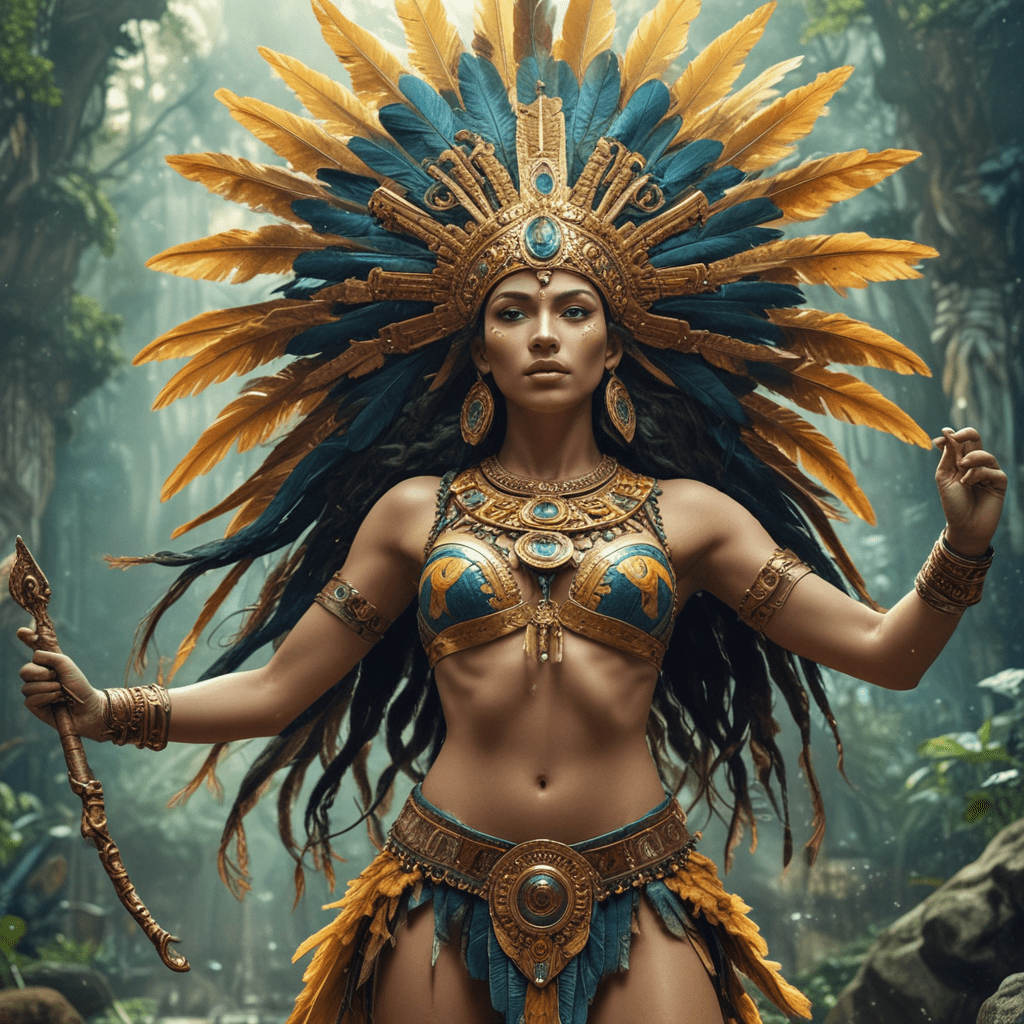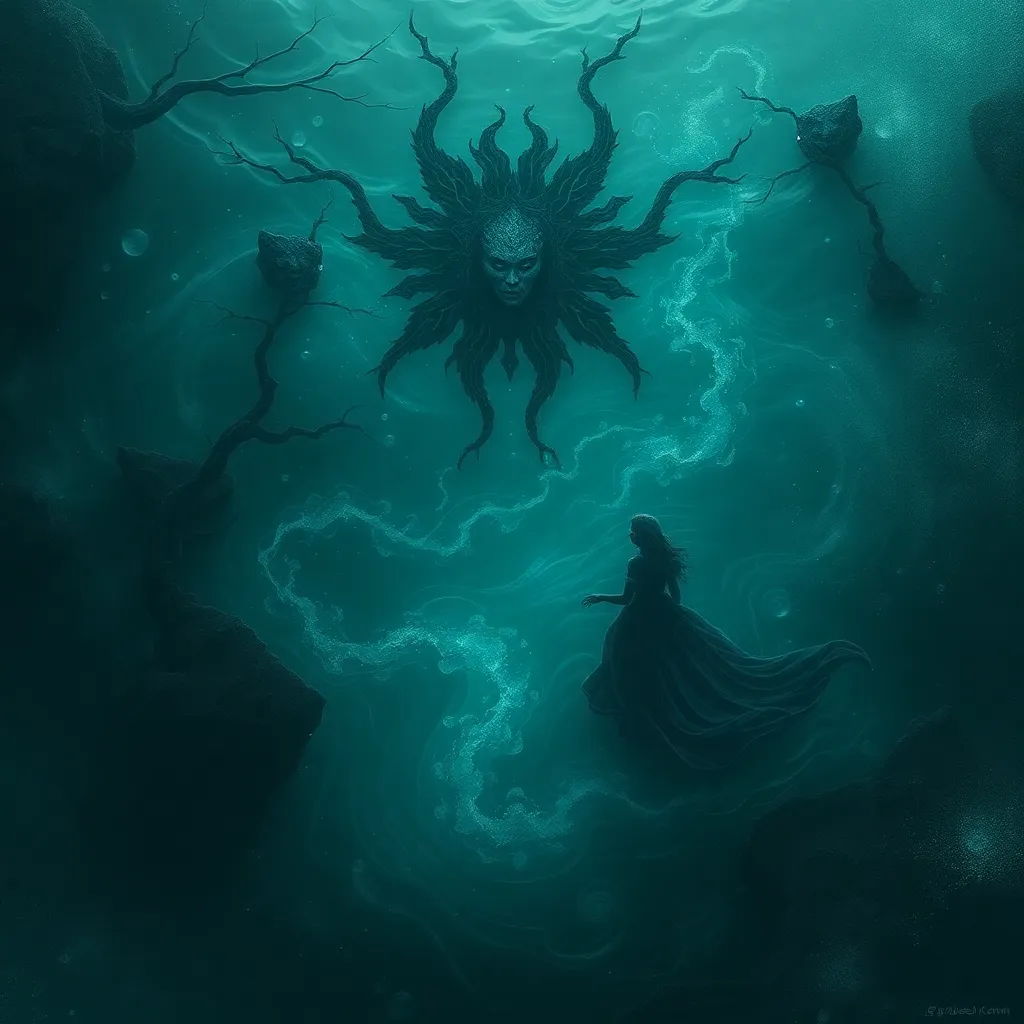South American Mythology and Its Influence on Modern Culture
Introduction:
South American mythology is a tapestry of ancient beliefs, legends, and traditions woven by indigenous cultures over centuries. It holds a profound significance in understanding the history, culture, and worldview of the region. From the depths of the Amazon rainforest to the towering peaks of the Andes, mythological tales have shaped the identity and values of South American societies. In this article, we will explore the rich landscape of South American mythology and its enduring influence on modern culture.
The Creation Myths:
The tapestry of South American mythology is woven with diverse creation myths, each offering a unique perspective on the origins of the universe and humanity. The Guarani people of South America narrate the tale of Ñandé Ru, the great spirit, who created the world from the waters of chaos. The Mapuche of Chile recount the story of Nguenechen, who brought light and order to the world after a great darkness. These creation stories not only provide a sense of belonging but also shape the cultural values, beliefs, and traditions of the societies that hold them dear.
The Gods and Goddesses:
At the heart of South American mythology lies a vibrant pantheon of deities, each embodying a specific aspect of nature or human existence. Pachamama, the earth mother, is revered for her nurturing qualities, while Viracocha, the creator god, is often depicted as a powerful being responsible for the creation of life. The Inca god Inti represents the sun, a source of warmth and vitality, while Mama Quilla, the moon goddess, presides over the night sky. These divine figures have played a central role in shaping religious beliefs, cultural practices, and artistic expressions.
The Heroes and Tricksters:
South American mythology is replete with heroes and tricksters who embody cultural values, strengths, and weaknesses. Huayna Capac, the Inca warrior who conquered vast territories, is remembered for his bravery and military prowess. The trickster god Tunupa, depicted as a mischievous character, is often associated with chaos and disruption. These legendary figures provide insights into the human condition, teaching valuable lessons about courage, perseverance, and the consequences of one's actions. They continue to inspire stories, art, and cultural narratives, reinforcing a sense of pride and connection with the past.
The Sacred Animals:
The natural world holds a central place in South American mythology, with animals playing a pivotal role in creation stories, myths, and rituals. The jaguar, known for its strength and agility, is often seen as a guardian of the forests and a symbol of power. The condor, with its impressive wings, represents the connection between the human and spiritual realms. Animals are not only revered for their physical qualities but also for the wisdom and lessons they impart to the people of South America.
6. The Rituals and Ceremonies:
South American mythology is deeply intertwined with traditional rituals and ceremonies that serve to honor the deities, maintain cultural identity, and connect communities with their ancestral heritage. The Inti Raymi, an ancient Inca festival held annually in Cusco, Peru, celebrates the sun god Inti with colorful parades, music, and dance. Ayahuasca ceremonies, practiced by indigenous groups in the Amazon rainforest, are believed to facilitate a connection with the spiritual realm and provide healing and enlightenment. These sacred rituals and ceremonies play a vital role in preserving cultural traditions and strengthening community bonds.
7. The Influence in Literature:
The rich tapestry of South American mythology has been a profound source of inspiration for literary works throughout the centuries. Gabriel García Márquez, the renowned Colombian author, masterfully weaved mythological elements into his magical realist novels, blurring the lines between the real and the mythical. In his masterpiece, "One Hundred Years of Solitude," Márquez draws upon indigenous creation stories and folklore, creating a captivating narrative that explores themes of family, history, and the human experience. Similarly, Chilean author Isabel Allende has incorporated mythological themes and characters in her works, showcasing the resilience and spirit of the South American people.
8. The Influence in Art:
South American mythology has served as a muse for artistic expressions across various mediums. In the vibrant paintings of Oswaldo Guayasamín, mythological figures such as Pachamama and Viracocha come to life, capturing the essence of Andean spirituality. Traditional textiles woven by indigenous groups often feature intricate designs inspired by mythological stories and symbols. The intricate pottery and ceramics crafted by South American artisans depict mythological scenes and characters, preserving ancient artistic traditions and showcasing the creativity of these communities.
9. The Influence in Popular Culture:
In contemporary times, South American mythology continues to resonate in popular culture. Films, television shows, and music incorporate mythological themes and characters, introducing a wider audience to the rich heritage of the region. The Marvel Cinematic Universe, for instance, features the character of Thor, whose origins trace back to Norse mythology, but has been adapted with elements of South American mythology, such as the concept of the rainbow bridge Bifrost. Similarly, popular musicians such as Shakira and Carlos Santana have drawn inspiration from South American mythology in their music, showcasing its influence beyond traditional cultural contexts.
10. Conclusion:
South American mythology, with its rich tapestry of creation myths, deities, heroes, and rituals, has played an instrumental role in shaping the cultural identity, beliefs, and artistic expressions of the region. Its influence extends far beyond ancient traditions, permeating modern literature, art, and popular culture. By preserving and celebrating this rich mythology, South American communities maintain a connection with their ancestral heritage and continue to draw inspiration for contemporary cultural endeavors. South American mythology serves as a testament to the enduring power of human storytelling, connecting people to the past, present, and future.
FAQs:
- What are the main characteristics of South American mythology?
South American mythology is characterized by its diverse creation myths, pantheon of deities, legendary heroes and tricksters, sacred animals, and rich ritual practices. It reflects the unique cultural and historical experiences of indigenous communities throughout the region.
- How has South American mythology influenced modern literature?
South American mythology has been a major source of inspiration for literary works across genres. Authors such as Gabriel García Márquez and Isabel Allende have incorporated mythological themes, characters, and symbols into their writings, creating captivating narratives that resonate with readers worldwide.
- In what ways is South American mythology present in contemporary culture?
South American mythology continues to influence contemporary popular culture through films, television shows, music, and other artistic mediums. It provides a rich source of inspiration for creators who seek to connect with the cultural heritage and traditions of the region.


